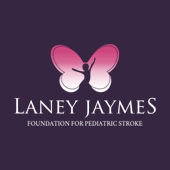Stroke is a medical emergency and a leading cause of death in children; however despite this, most people don’t even know that children can have strokes. The unawareness of pediatric stroke, by both the medical industry and the general public, too often causes children and infants to be misdiagnosed and mistreated, compromising their recovery.
One of our chief goals at the Laney Jaymes Foundation for Pediatric Stroke is to raise awareness of pediatric stroke and to improve the outcomes of pediatric stroke patients.
Strokes can happen at any time and at any age — including to young children, babies, and even in utero — and the causes vary as widely as they do in adults. Laney’s rare vascular disease, which was similar to Moyamoya disease, caused her multiple severe strokes. There are many other causes of stroke in children too.
First, be aware that of the most common stroke warning signs that occur in adults occur in children.
Spot a Stroke F.A.S.T.:
Facial droop
Arm weakness
Speech difficulty
Time to call 911
According the the National Stroke Association, there are also additional symptoms that you should look for in children, depending on their age, as well as risk factors for stroke in children…
Unique symptoms of stroke in children:
In newborns and infants
• Seizures.
• Extreme sleepiness.
• Tendency to use only one side of their body.
In children and teens
• Severe headaches
• Vomiting
• Sleepiness
• Dizziness
• Loss of balance or coordination
Common risk factors for stroke in children include:
• Congenital heart defects
• Sickle-cell disease
• Immune disorders
• Diseases of the arteries
• Abnormal blood clotting
• Head or neck trauma
• Maternal history of infertility
• Maternal infection in the fluid surrounding an unborn baby
• Premature rupture of membrane during pregnancy
• Pregnancy related high blood pressure in the mother
As we get started in this mission, we hope you’ll review and PLEASE SHARE these risk factors and specific symptoms that you should look for in children, depending on their age.




